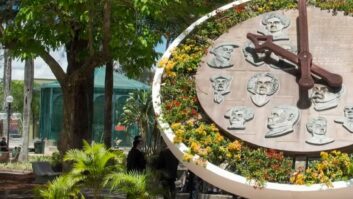The FCC has dismissed another LPFM hopeful east of Los Angeles after the applicant failed to meet the commission’s localism requirements.
Fontana-based Heme Aqui Church and San Dimas-based MENA Coalition Inc. — alongside another previously-dismissed applicant — both filed applications for construction permits for new LPFM stations during the 2023 filing window.
The dismissed applicant, Iglesia Ministerios Voz De Jubilo, was initially named the selectee of MX Group 12 through the FCC’s standard tiebreaking process for MX groups. Heme and MENA tied for second. However, in April, MENA subsequently filed a petition to deny Iglesia’s application, which argued that Iglesia had misrepresented the address of its president, Roberto G. Melena, in its application.
MENA also alleged that Iglesia’s voting structure violated California law, that its listed main studio address — a residential location — was not a viable site and that neither the board members’ residences nor the organization’s headquarters satisfied LPFM localism requirements.
Iglesia’s application was ultimately dismissed after the organization’s engineer failed to provide comment on MENA’s petition to deny.
[Read: “FCC Dismisses LPFM Applicant in California Over Petition Silence“]
After the dismissal of Iglesia’s application, the commission received a different petition to deny by MENA, asking to toss out the Heme application.
In the petition, MENA argued that “Heme fails to meet the basic qualification requirement to be local to its proposed antenna site.” Specifically, MENA asserts that the residences of Heme’s directors are more than 20 miles from Heme’s proposed antenna site.
MENA also wrote in its petition that the listed address of Heme’s headquarters is a vacant building. MENA said, along with the lack of evidence that Heme “has done anything since its inception other than file [its] application,” this demonstrates that Heme is an “inchoate corporate shell.”
Subsequently, the FCC found that Heme did, in fact, fail to meet its localism requirement. To qualify as local, an LPFM applicant within the top 50 urban markets, such as Heme, must either: (1) be physically headquartered or have a campus within 10 miles of the transmitting antenna site proposed in its application; or (2) have 75% of its board members residing within 10 miles of the transmitting antenna site proposed in its application.
While Heme argued that it meets these requirements, the FCC found opposing evidence showing that Heme’s listed board members reside in Apple Valley, 33 miles from its proposed transmitting antenna site in Rancho Cucamonga, Calif.
Additionally, the FCC is not clear from its application which address Heme puts forth as its headquarters. There are two possibilities. One listed address is in Apple Valley, which sits outside of the FCC’s localism rules. The other address, in Fontana, fits the FCC’s localism requirement; however, provided photographs show a lack of use.
“MENA provides photographs of the Fontana address that show a vacant building with a sign in the window indicating that a tax preparation service previously occupied the building,” said the FCC in its notice. “The photographs also show an electrical meter that is turned off, and MENA states that there is ‘no evidence of any current or recent activity of any kind at this site.'”
Heme did not file an opposition to MENA’s petition or provide any additional information. The FCC subsequently dismissed Heme’s application and named MENA as the tentative selectee in LPFM MX Group 12.






